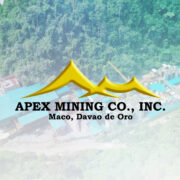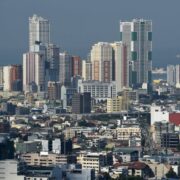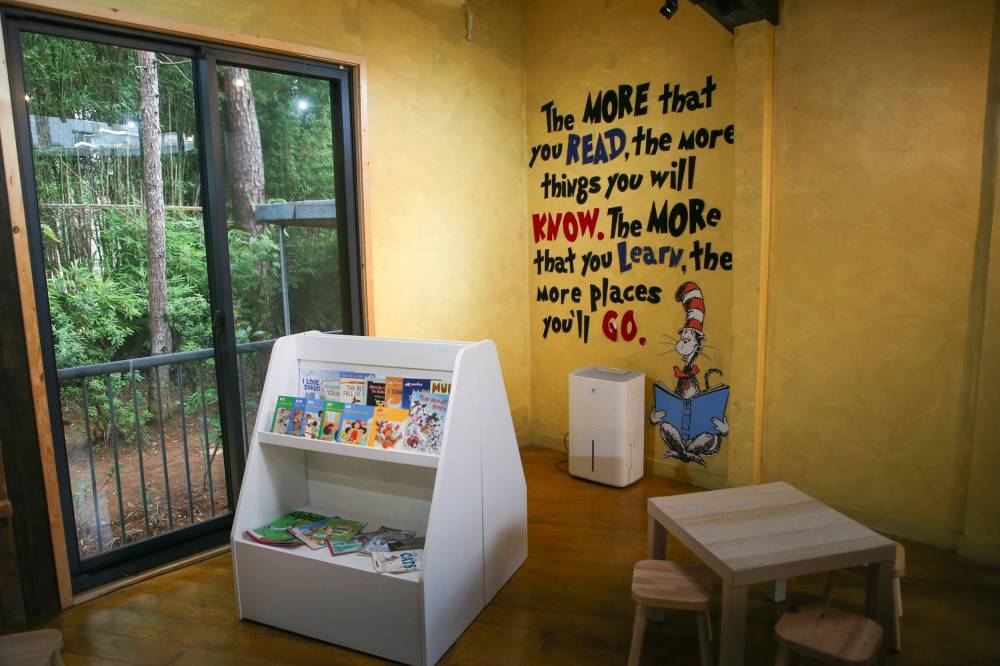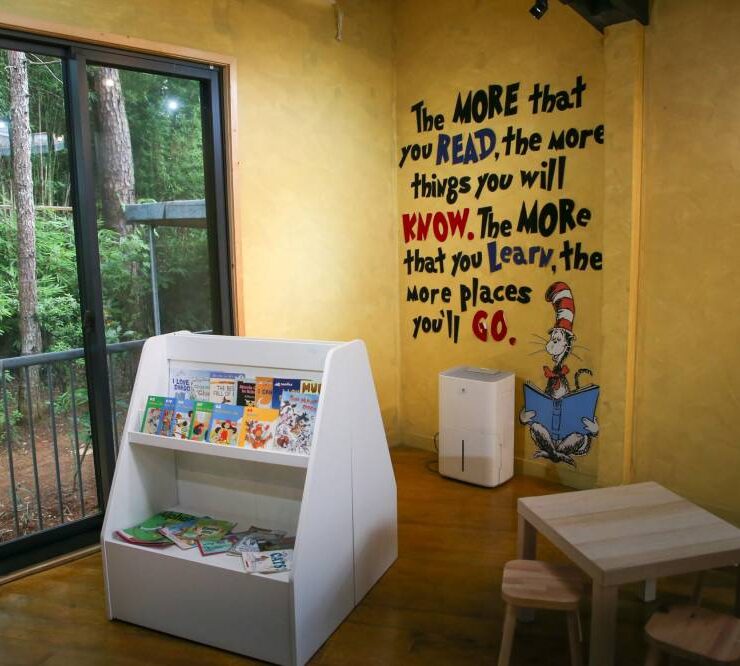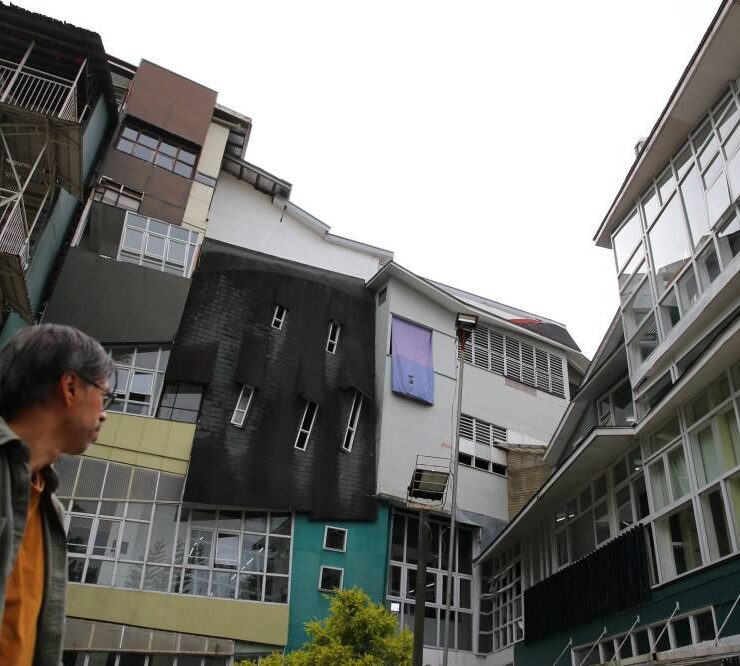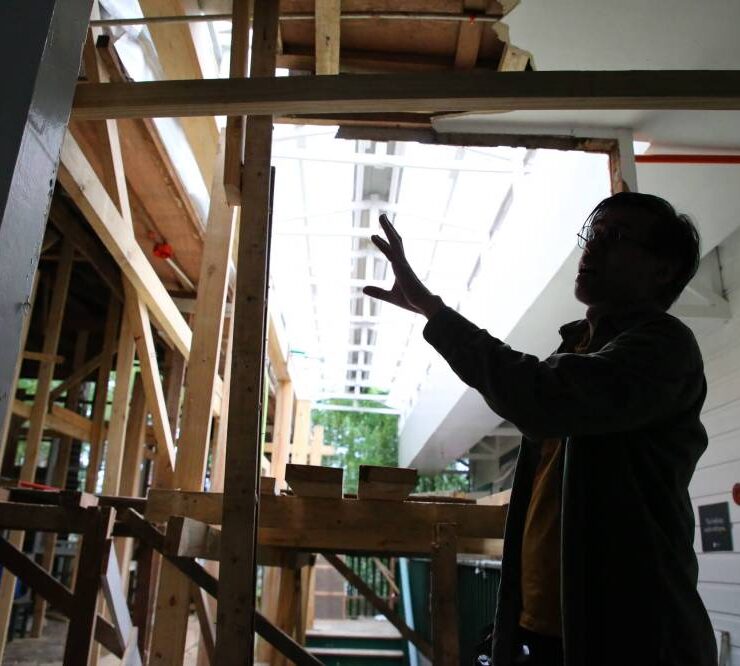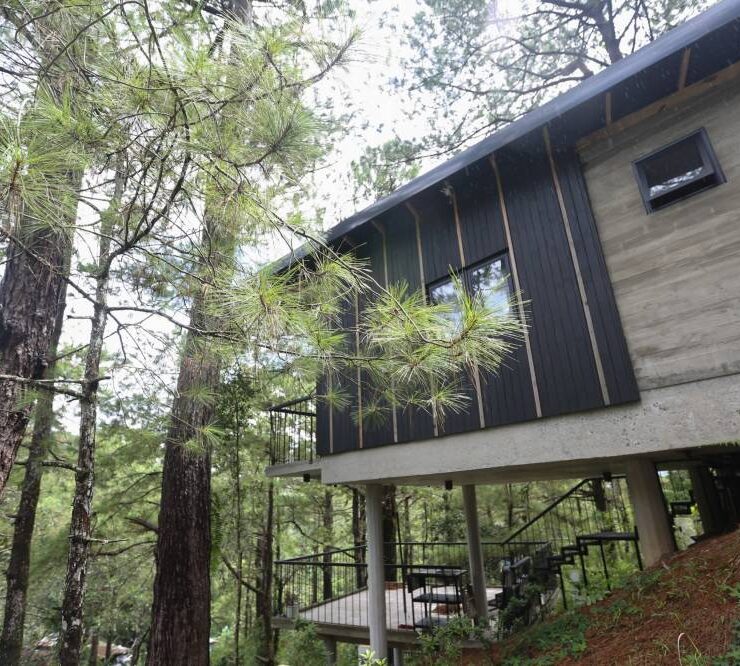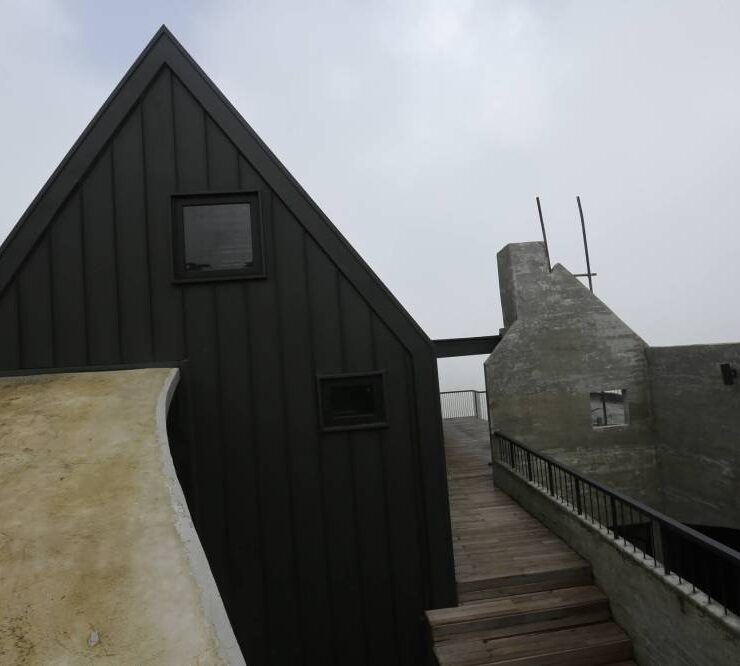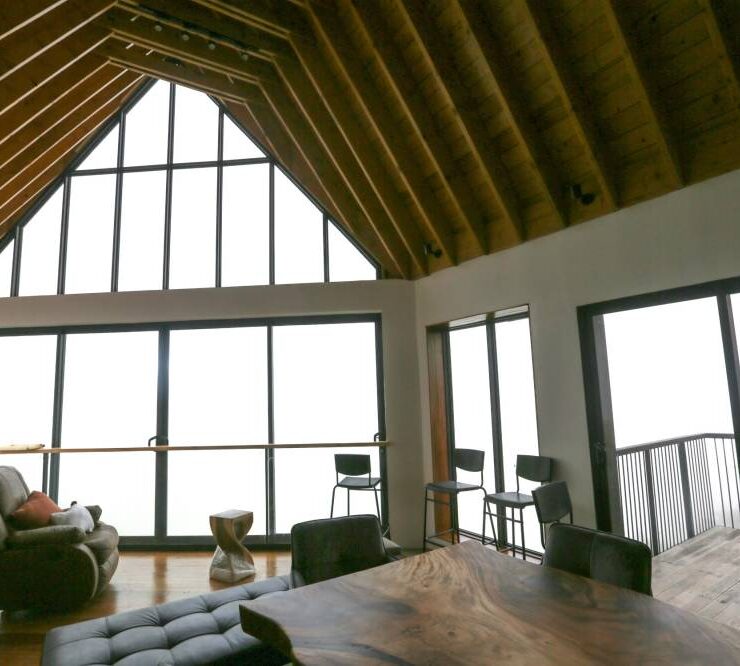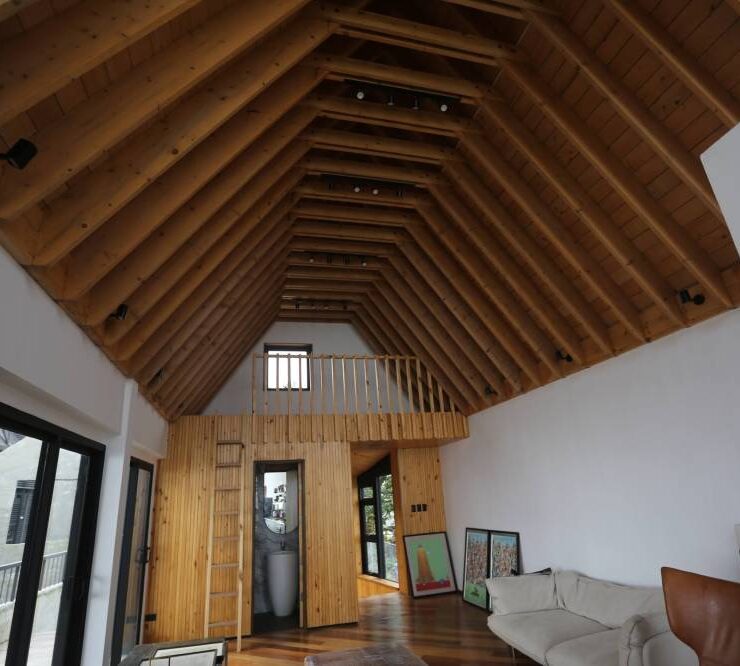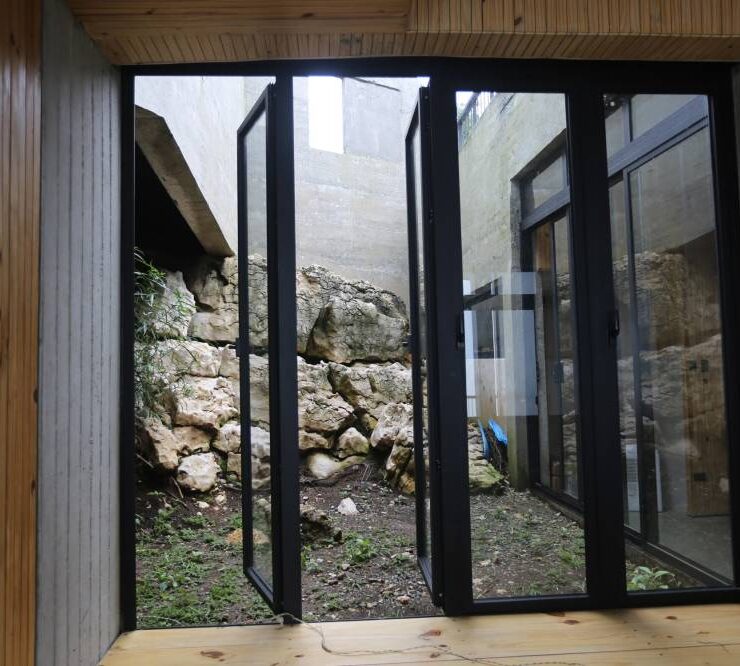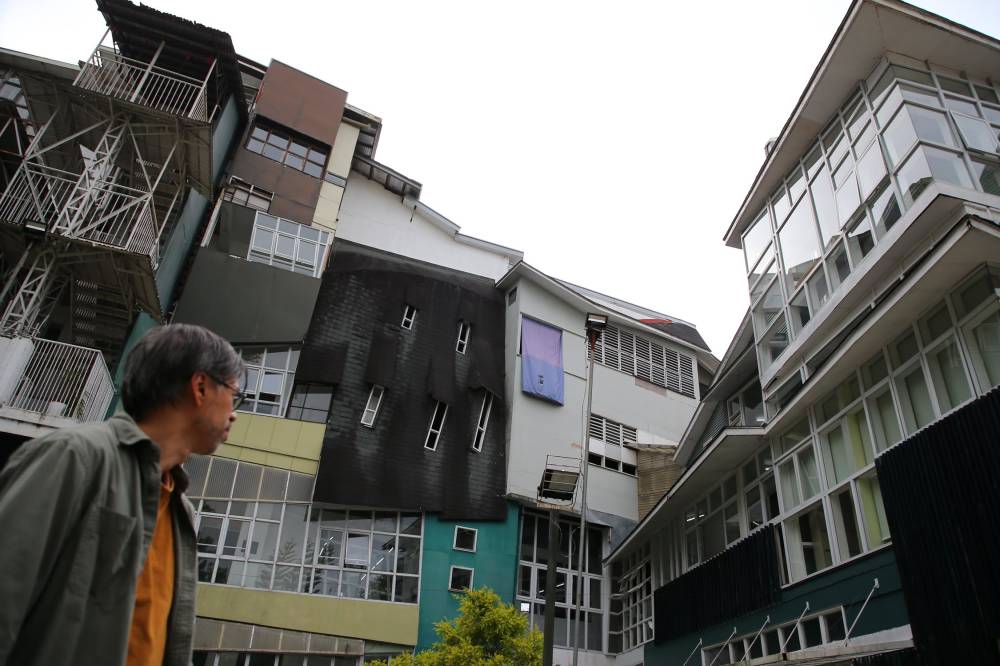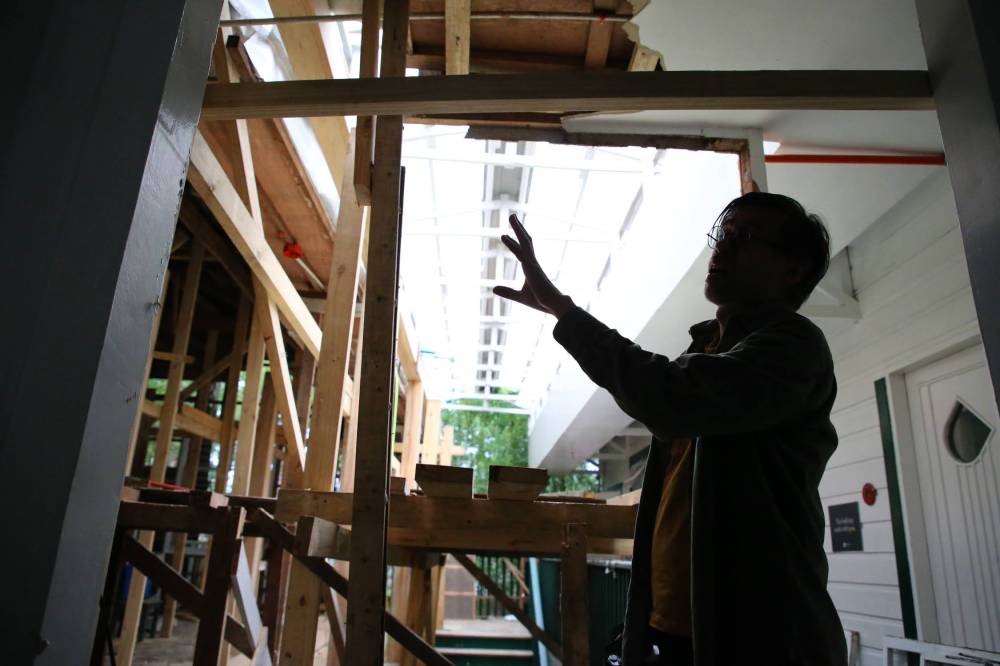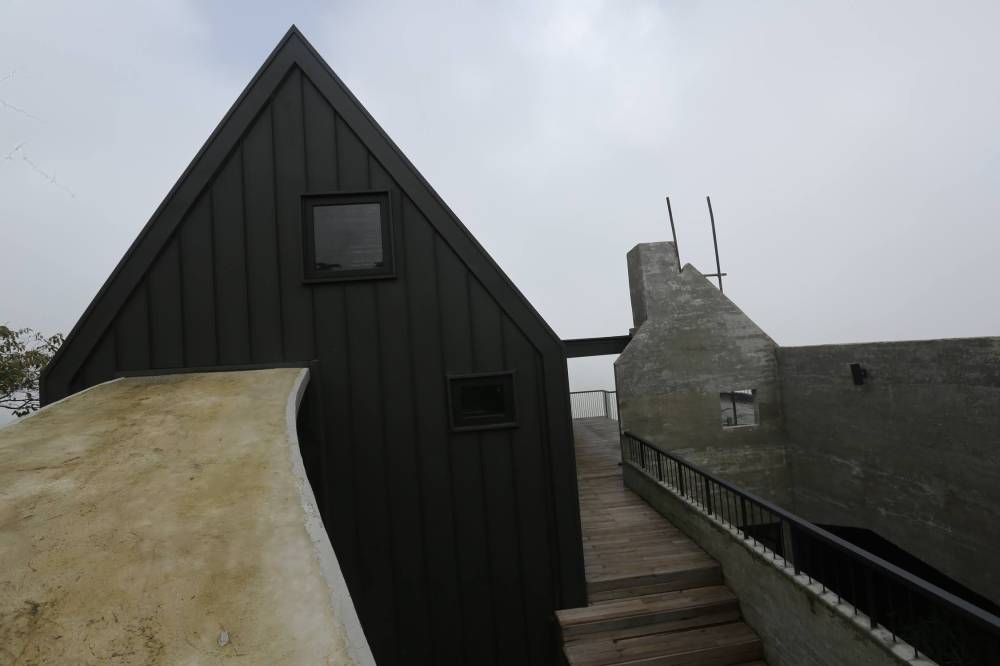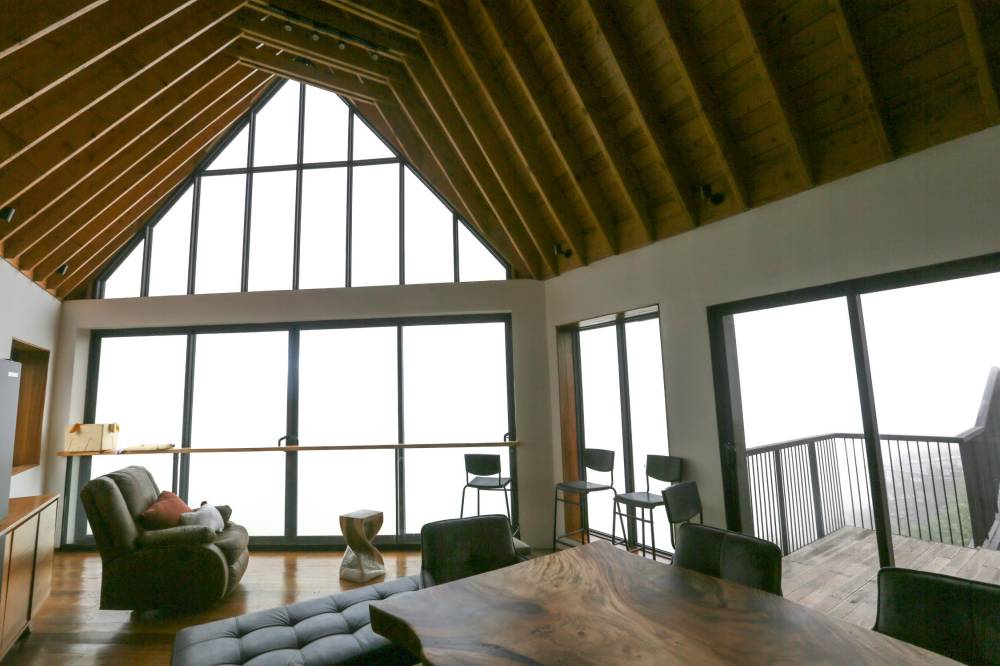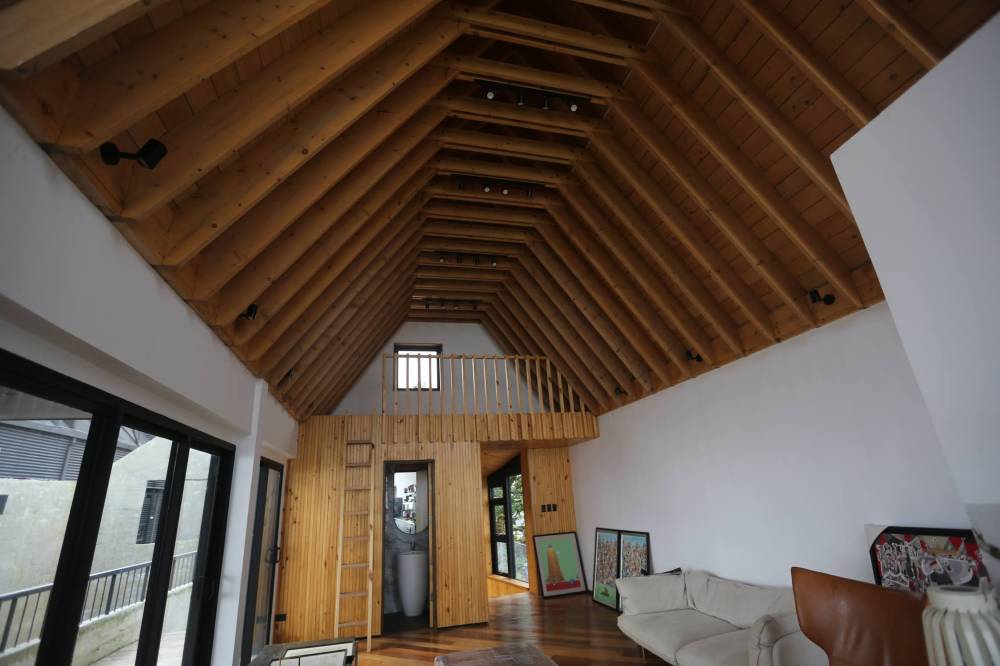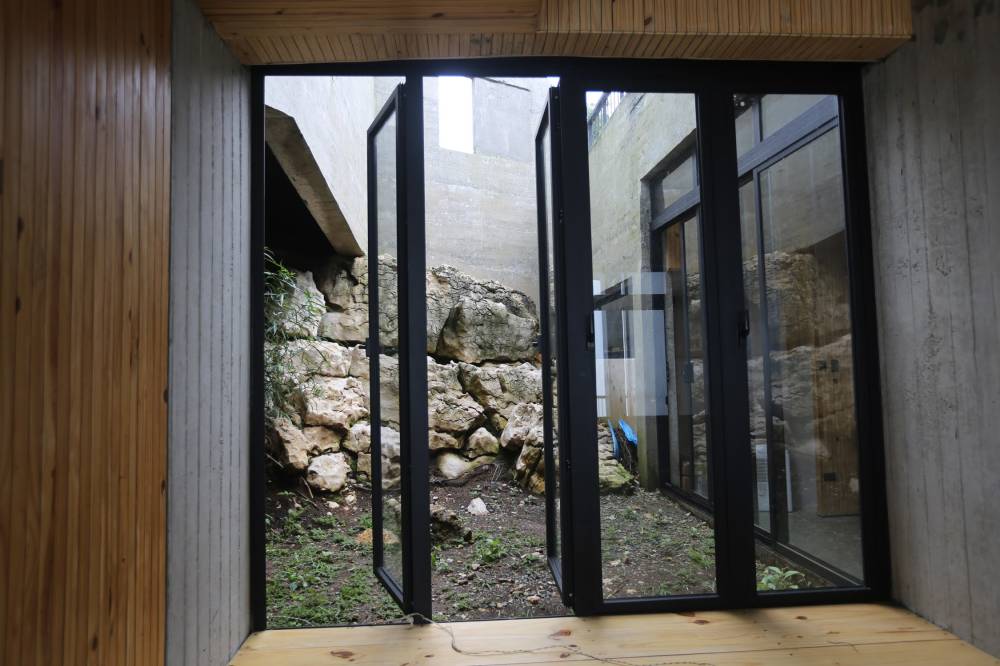How to spot an Aris Go
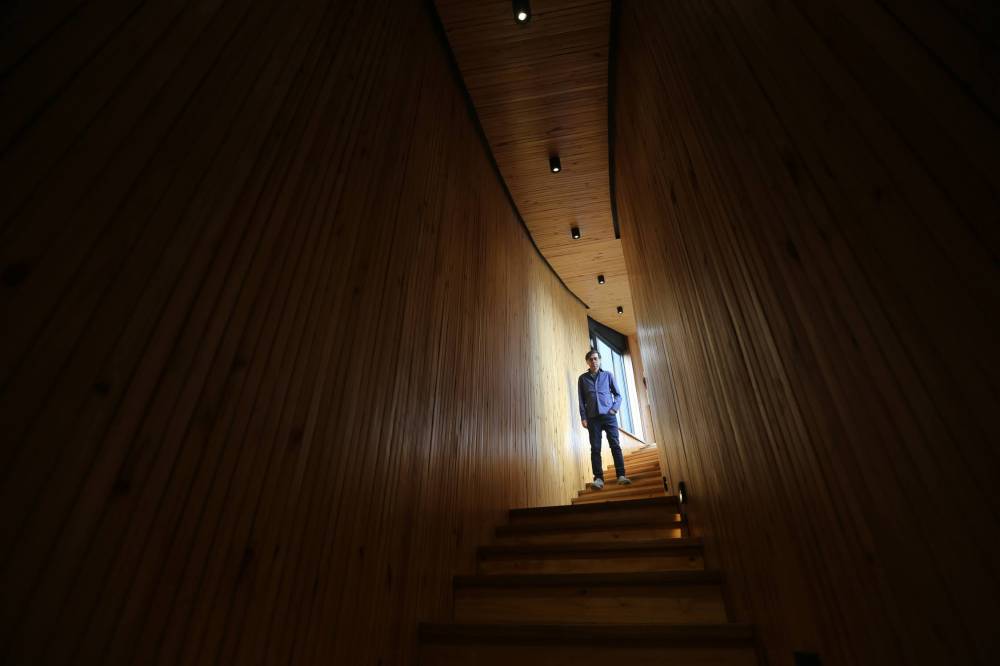
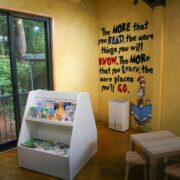
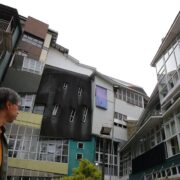
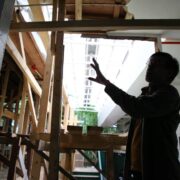
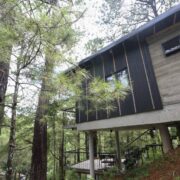 +4
+4 How to spot an Aris Go
Aris Go would wince at that title.
During one of his earlier interviews with this writer, he emphasized how it takes a team—not just one person—to construct a building, however much personality-based the industry has become.
Still, it’s hard not to attribute much of Ninety Design Studio’s aesthetics and solutions to his genius. Being the principal architect, his ideologies no doubt serve as guide to his crew of Baguio-based architects, designers and engineers. And looking at the firm’s more prominent projects—Museo Kordilyera and Teatro Amianan at the University of the Philippines Baguio; G1 Lodge at the heart of Baguio’s central business district; and Berkeley School, which his family owns—the similarities are hard to miss. There is the abundant use of wooden slats, the irregular shapes resulting from working around the land instead of against it, and seemingly impossibly multilevel and cozy interiors.
On Oct. 12 to Oct. 19, Gabe Mercado’s Baguio Psychogeography project (baguiopsycho.com), which reimagines travel within the Summer Capital, will hold several design-focused activities developed with the help of Go as well as the Design Center of the Philippines.
Baguio tour
“Aris is our foremost architect in Baguio and cares deeply about heritage, design and urban planning,” Mercado told Lifestyle. “He will be doing a ‘Hidden Details of Baguio’ architecture tour that will set up the Psychogeography Walk.”
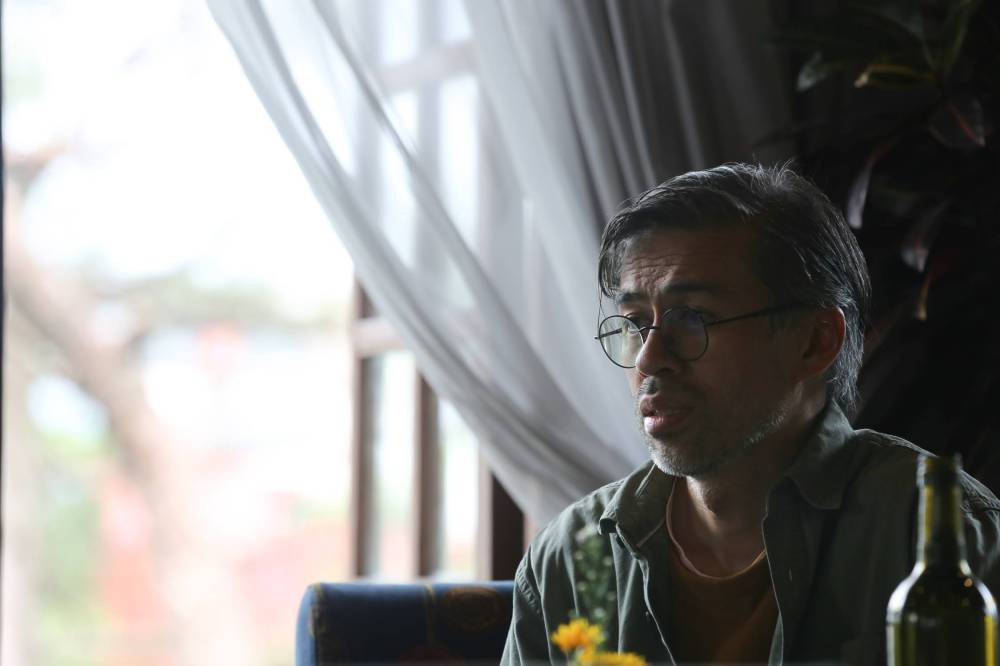
During our recent visit to the foggy city, we had our own mini tour of Go’s more recent works, a number of which are residential.
One “bahay-na-bato” home in the midst of construction follows an odd layout—because it’s being constructed around the existing trees instead of uprooting them.
“It’s not that we’re not allowed to cut trees, but we would prefer not to and instead retain what is in the site as much as possible,” Go said.
In another strikingly designed home that sits on a cliff and overlooks a couple of small waterfalls, the team retained a giant rock.
“We like constraints. Constraints make architecture more interesting,” he said, explaining that constraints are the immovable aspects of a site like trees, rocks, cliffs or the orientation of the sun. “Without constraints, sayang. There lies the opportunity for the building to be better. And it’s more unique.”
The single-story Hive, a primary school building, feels at home nestled amid pine trees with its usage of natural elements. Most, if not all, structures by Go and his team betray their distinct affinity for natural materials, especially timber.
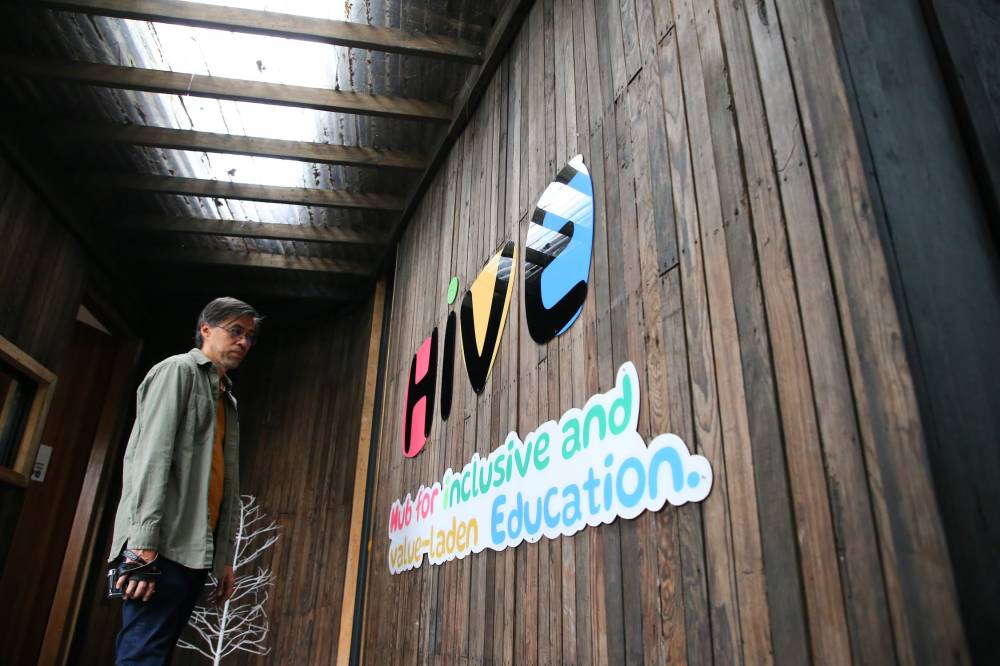
It would seem obvious that a place called City of Pines would be populated with wooden homes and buildings. And yet, much of the structures in Baguio have fallen prey to the allure of concrete and steel.
Preconceptions
Go remembered being advised against using timber back in university, probably due of notions of it not being the most durable material. “But for me, nothing lasts forever,” Go said.
“People have preconceptions about timber. It’s prone to termite infestation and deteriorates easily, which are true,” he added. “But if timber is treated well, it can last as long as concrete, sometimes even longer. And it has a higher design value.”
Since he started his practice, he has always worked with timber. But his history with the material began way back.
Because of his parents’ business, Go lived in many different houses when he was a kid. “By the time I was 16, we had moved to 16 different homes, and a lot of these houses were almost entirely wood.”
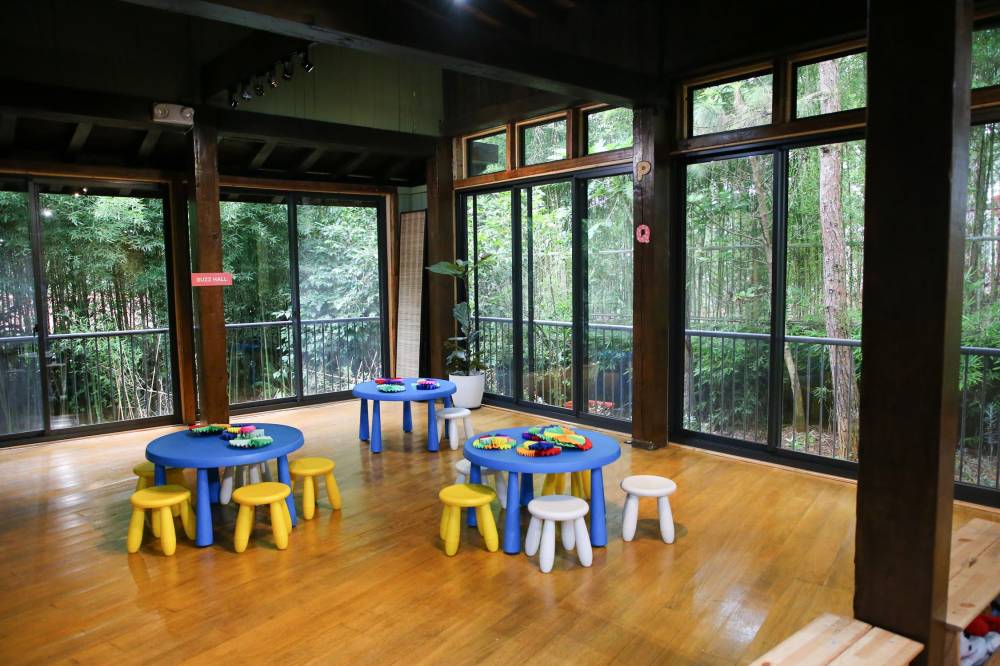
Centuries-old wooden homes
He saw the beauty of wood later on when he did his thesis on the historic conservation of houses in Taal, Batangas. There, he saw 200-year-old homes made of timber.
“Pwede naman pala eh. The fact that they lasted this long means it’s possible. They were able to do it, so why can’t we do it now? What are we doing wrong? Why is it getting infested with termites? Why does it deteriorate so quickly? That’s what I wanted to know.”
Because belief in timber as construction material was so low back when he was a student, he had no one to tell him how to work with it. He had to find out for himself by studying houses that were being demolished and analyzing their construction.
“We renovated a 1950s house, the old vacation home of former Vice President (Salvador) Laurel. When we gutted the house, I saw the structure. So, I just replicated it but in a new way.”
Go said he does not necessarily shun concrete. In fact, his team celebrates it, showing it off instead of covering it up with paint.
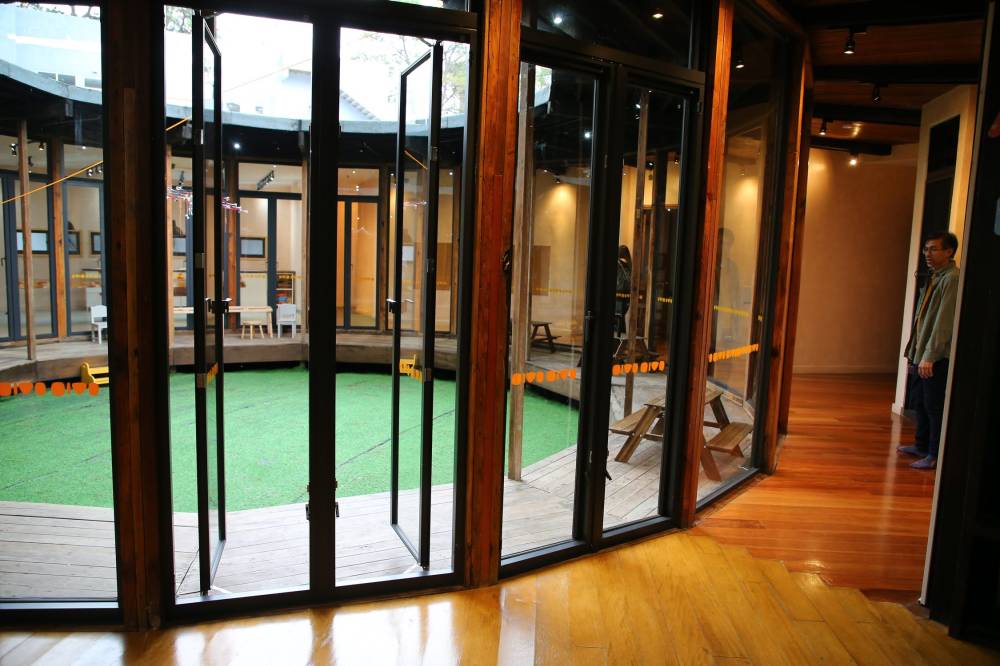
However, compared to concrete and steel, Go said timber is more sustainable. Many see concrete as more “green” since trees are not getting cut down. But creating and using concrete takes up a lot of energy. The process of mining lime, the basic ingredient, is already problematic. Then, lime still has to be heated at incredibly high temperatures to make concrete. This releases huge amounts of carbon into the atmosphere.
If farmed from places that replant trees, timber proves to be much more sustainable because of its capacity to store carbon, said Go.
High maintenance
“When you put timber in a building, you practically store carbon, which would otherwise go back to the atmosphere. If it’s used this way, it’s fixed here for a long time. And the beauty of timber is you can recycle it.”
“The only thing about timber is it needs higher maintenance,” he added. “But all buildings need a certain amount of maintenance.”
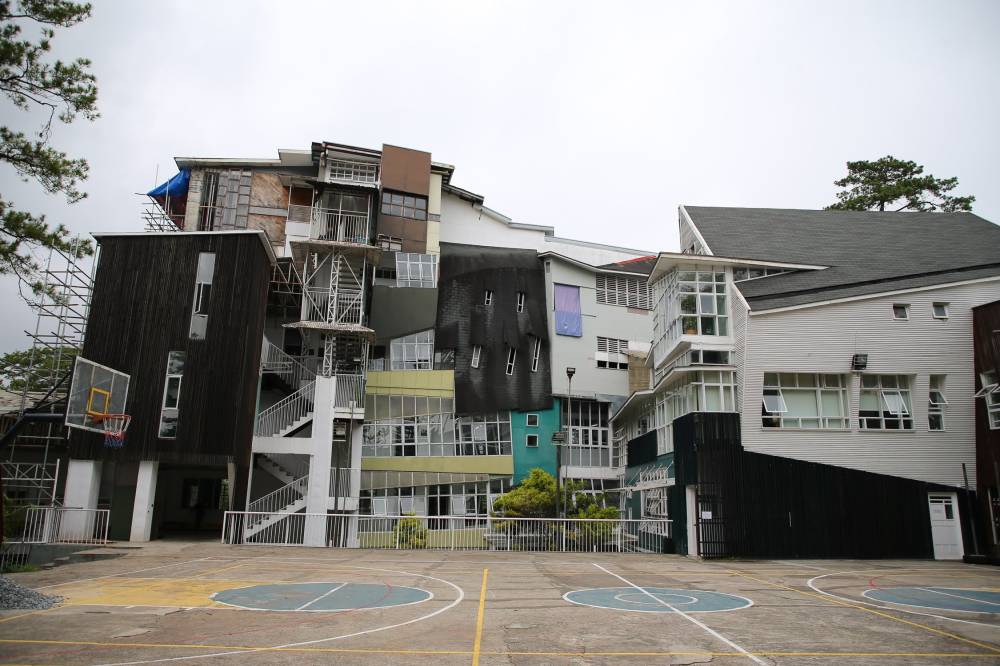
In fact, he makes sure to visit their projects long after they’ve finished constructing to check on how the structures are holding up.
“Until now, we’re still sort of experimenting. But if we don’t experiment, we won’t learn.”


